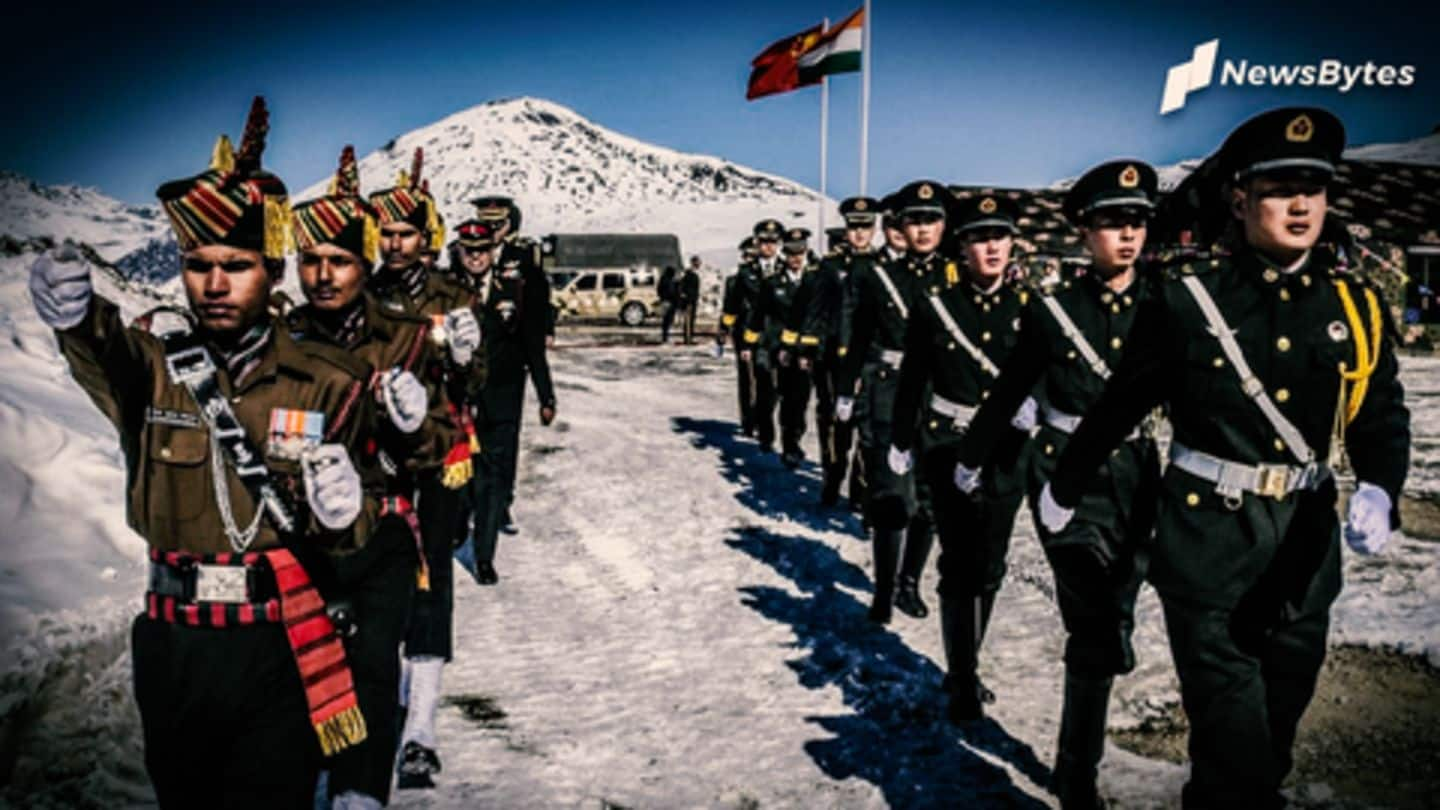
All you need to know about India-China tensions along LAC
What's the story
For days now, the Line of Actual Control (LAC), has been brimming with tensions, with several violent clashes happening between Chinese and Indian forces.
Both the countries have claimed innocence, blaming the other for trespassing.
India has clarified it will not let China's aggressive actions change the status quo, and is taking steps in this direction.
Here's everything you must know about this development.
Context
Situation has been heating up since May's beginning
Since the beginning of May, several aggressive incidents have taken place in Eastern Ladakh, threatening the status quo.
On May 5, nearly 250 Chinese and Indian soldiers were engrossed in a violent face-off in Eastern Ladakh. The tensions spilled over the next day and were halted after local commanders stepped in.
Four days later, a similar incident was reported from Pangong Tso, North Sikkim.
Patrolling
China upped patrolling in some areas, so did India
After these incidents, China amped up patrolling in areas like Pangong Tso lake, Galwan Valley, Demchok, and Daulat Beg Oldi. The Indian side also did the same.
Meanwhile, China blamed India for trying to change the status of LAC in Sikkim and Ladakh, a charge which MEA Spokesperson Anurag Srivastava denied.
He said India has always taken a responsible approach towards border issues.
Stand
China's aggressive behavior will be met with "strength and restraint"
India's stand is that it will neither stop infrastructure projects along the 3,500-km Sino-India border nor will it allow China to change the status quo. All attempts of the Chinese military will be met with "strength and restraint".
Defense Minister Rajnath Singh has already communicated to the top brass of military that no infrastructure projects (in Sikkim, Ladakh, or Arunachal Pradesh) need a review.
Meeting
PM Modi met with NSA, CDS, and three service chiefs
Yesterday, Prime Minister Narendra Modi met with National Security Advisor Ajit Doval, Chief of Defence Staff (CDS) General Bipin Rawat and three service chiefs to take stock of the current situation.
Army chief General Manoj Naravane gave a detailed presentation on the stand-off at various points.
A person in the know told HT the situation isn't new, and India will face it with strength.
Statement
Motive of China in current scenario is unclear
The person said no violations happened from the Indian side and that our troops are fully aware of the alignment at LAC.
"The Chinese have raised similar objections and made similar attempts [to hinder the activity of Indian troops] in the past too. Their motives and intentions in the current circumstances are not clear," the person said.
Diplomatic talks at various levels are underway.
Talks
The doors for dialog aren't shut
Meanwhile, an Indian Express report said Indian and Chinese sides have activated "working mechanism" at diplomatic levels, besides the military conversation going on between both troops on the ground level.
This mechanism was put in place in 2012, during former PM Dr. Manmohan Singh's tenure, and was inked by current External Affairs Minister S. Jaishankar, who was India's ambassador to Beijing at the time.
Details
Several meetings have happened since 2012
In 2012, the "Working Mechanism for Consultation & Coordination on India-China Border Affairs (WMCC)" was formed after conversations between ex-NSA Shivshankar Menon and Dai Bingguo, his Chinese counterpart.
Since then, 14 meetings have happened, the last one taking place in July 2019.
In the last meeting, representatives of both countries discussed border management. In the current situation, Srivastava is reported to be leading the talks.
Assessment
According to India, China is "holding the line"
India thinks the Chinese are involved in something called "hold the line". Since LAC isn't marked clearly, both sides "claim lines" before returning. A usual patrol has nearly 25-30 soldiers, but China has deployed more forces, miffing the Indian side.
Though several meetings, both online and physical, happened on the issue, the government is yet to decide on holding political-level talks.
Levels
There are three levels at which diplomatic talks can happen
The dialog could either happen between Jaishankar and his Chinese counterpart Wang Yi; Doval and Wang (as he is China's special representative for border talks); or between PM Modi and China's President Xi Jinping.
The time for the highest-level talks hasn't come yet, feels India.
Separately, efforts were launched to resolve the dispute "locally" where troops could return to their positions in 7-10 days.
Exercise
China's decision to repatriate citizens not linked with border tensions
Meanwhile, in Delhi, the Chinese embassy has said the decision to repatriate citizens is not related to the border tensions.
"In consideration of the development of the epidemic situation in India, the Chinese side is planning to dispatch temporary flights to India to bring back students, tourists, and business inspectors who are facing difficulties in India," Embassy Spokesperson Ji Rong had announced earlier.